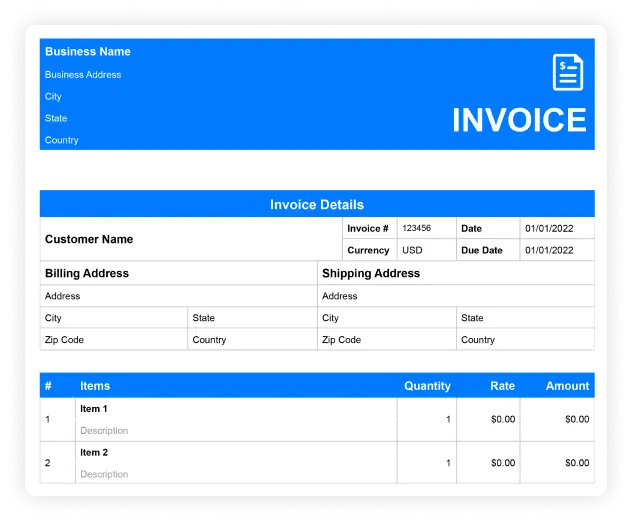Construction Invoice Format
A Construction Invoice Template helps construction businesses bill for labor, materials, and project costs efficiently and accurately.
- Lists project materials, labor hours, and subcontractor costs.
- Tracks project milestones and payments.
- Ensures accurate billing for large or small construction projects.

Download Customizable Construction Invoice Format
Create Your First Customize Construction Invoice Template With CaptainBiz
What Should Be Included in Construction Bill Format
Client and Contractor Information:
Include the client’s name and contact details along with the contractor’s information for clear communication and proper documentation.
Project Details:
Provide a detailed breakdown of the work done, including specific tasks, labor hours, and materials used. This helps the client understand the scope of the project.
Payment Milestones:
Clearly define the payment structure, whether based on project milestones, percentage completion, or a flat rate. This keeps both parties aligned on financial obligations.
Materials and Labor Costs:
Itemize the cost of materials, labor hours, and subcontractor fees. This ensures the client knows what they are being billed for, minimizing disputes.
Invoice Number and Date:
Include a unique invoice number and the date to help with tracking and record-keeping for future reference.
Terms and Conditions:
Clearly outline any terms regarding payment deadlines, late fees, and acceptable payment methods. This helps avoid delays and ensures the client knows how to pay.
So what are you waiting for?
Frequently Asked Questions (FAQs)
A construction invoice template is used to bill clients for labor, materials, and other project-related costs in the construction industry.
It should include contractor and client details, a breakdown of project costs, labor and materials used, payment terms, and the invoice date and number.
Yes, construction invoices can be customized to include milestone payments based on project completion percentages or timelines.
Itemizing materials and labor separately ensures transparency, helping the client understand the exact costs associated with the project and minimizing confusion.
It streamlines billing, ensures timely payments, and helps contractors maintain organized financial records, improving cash flow management.



